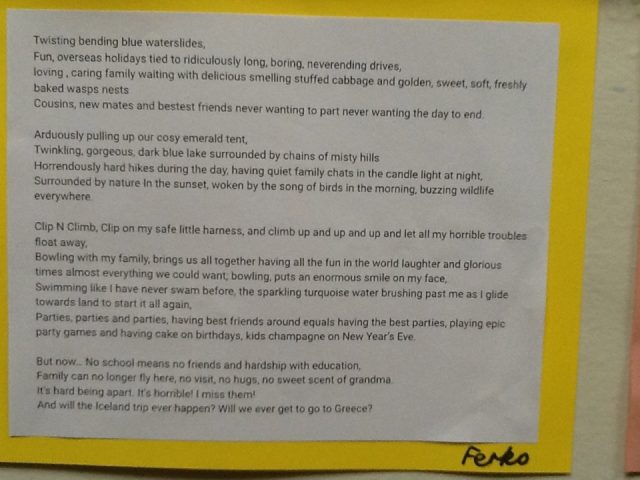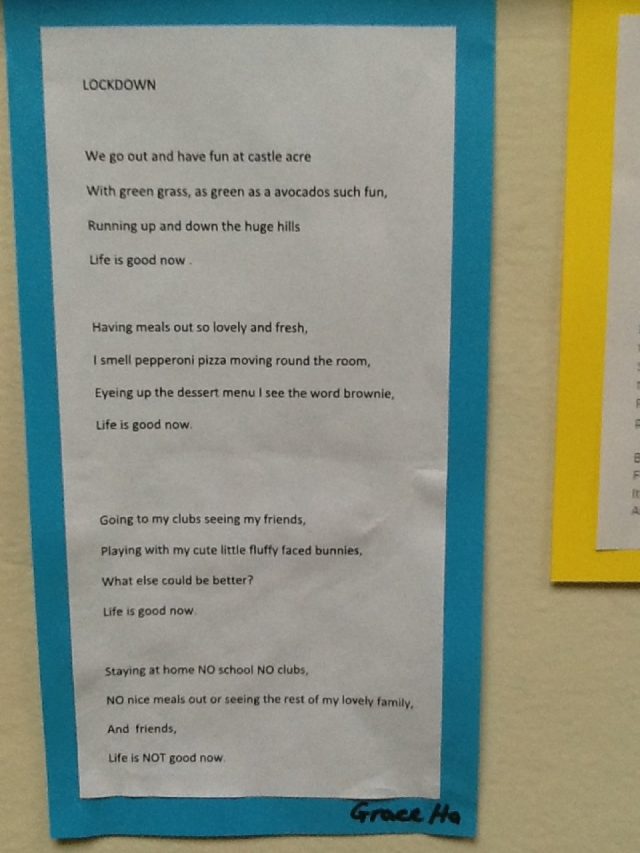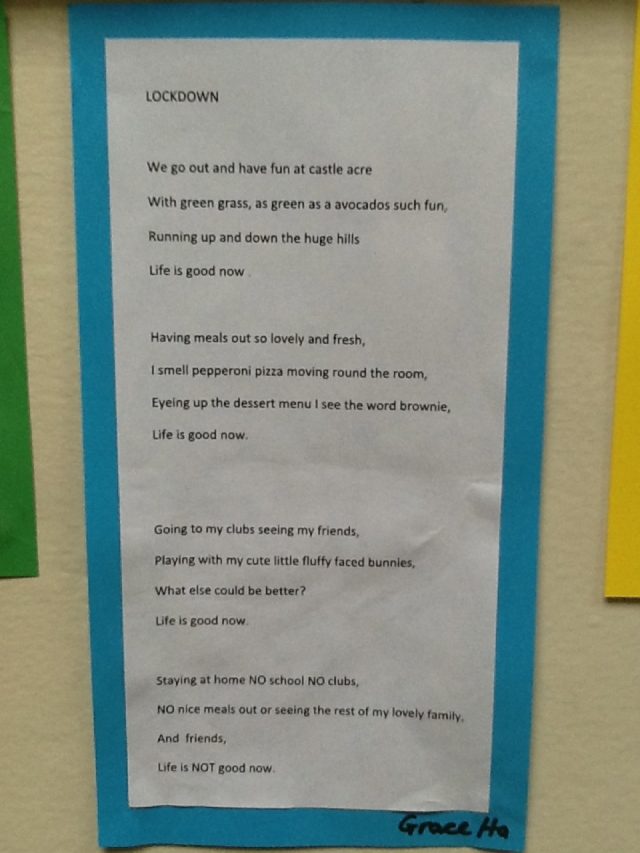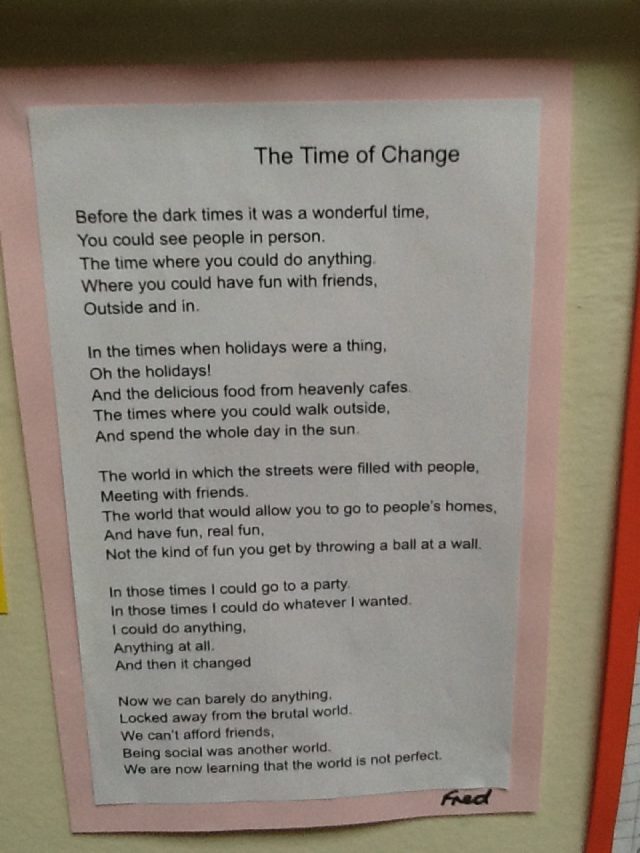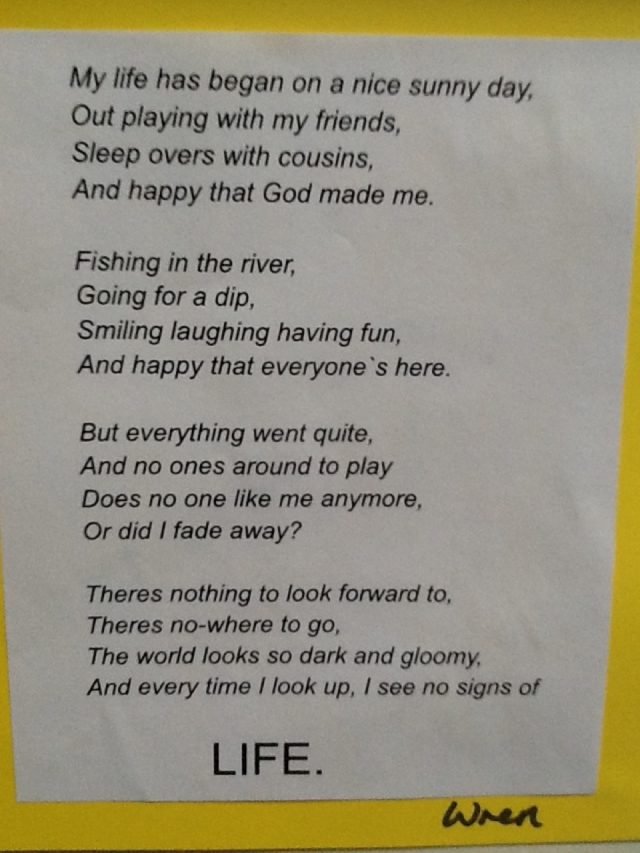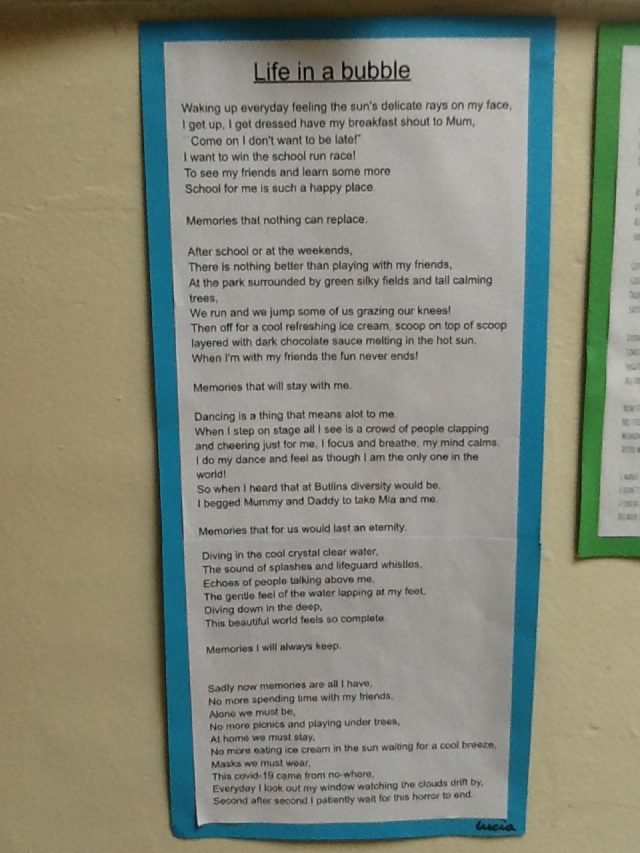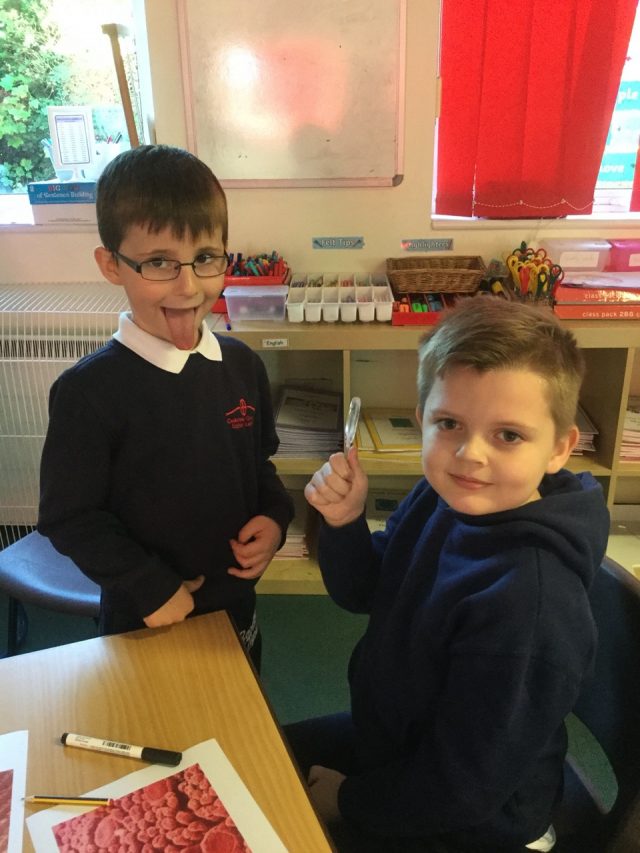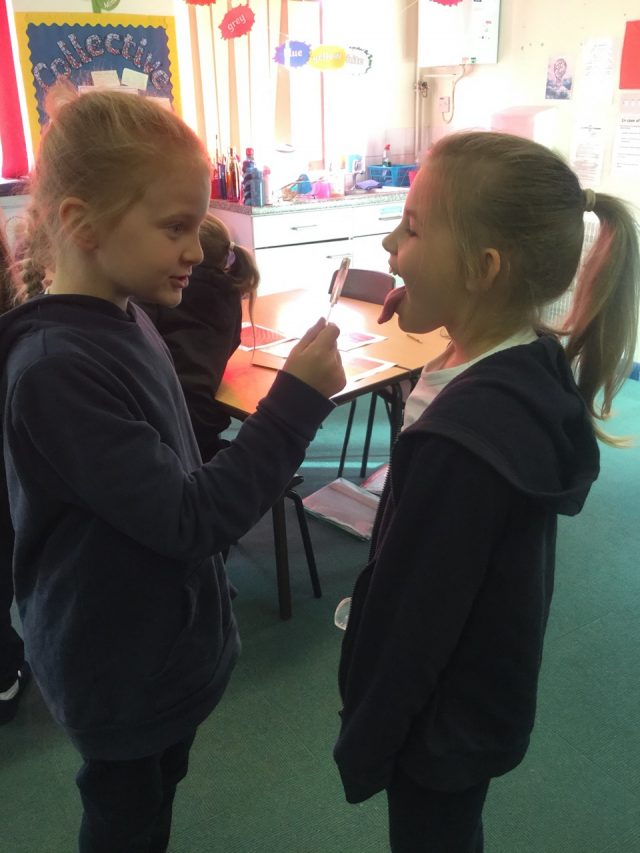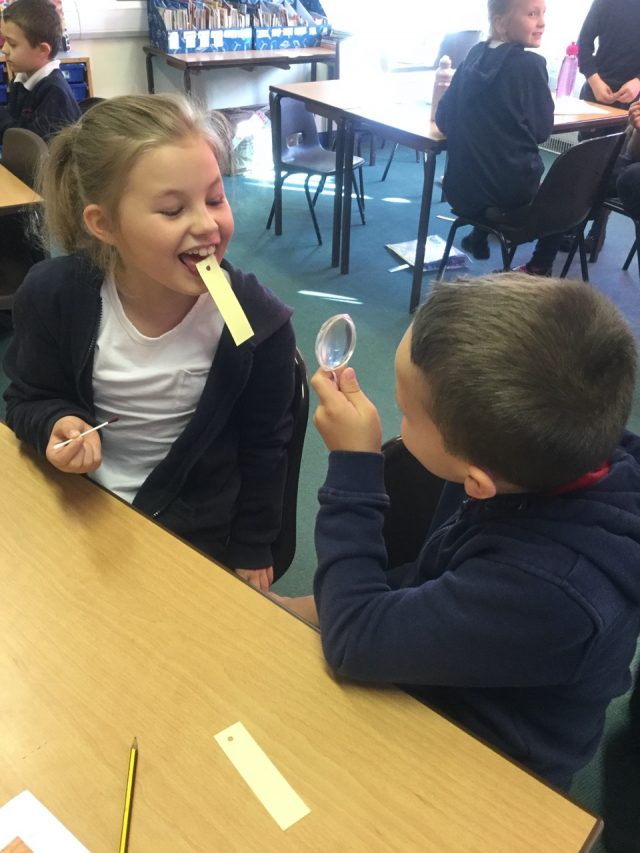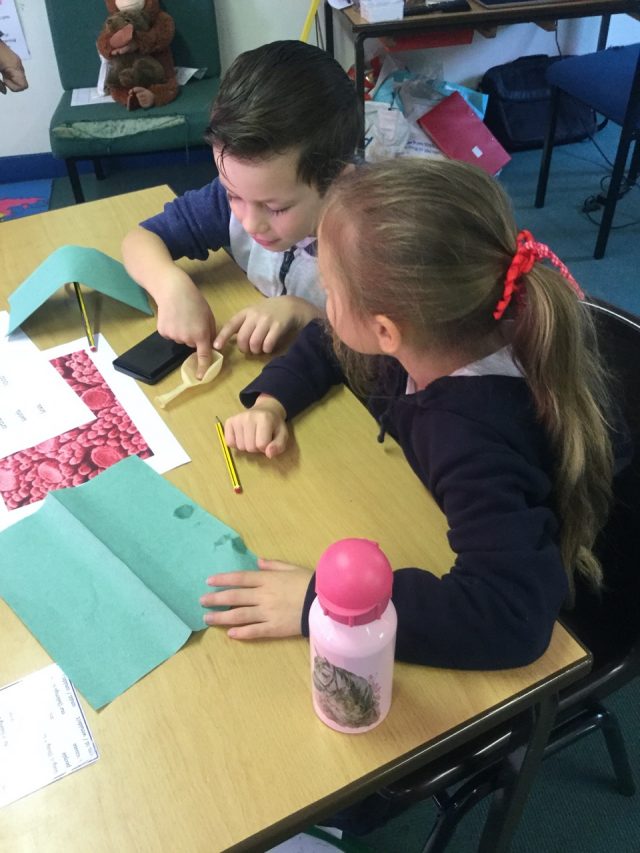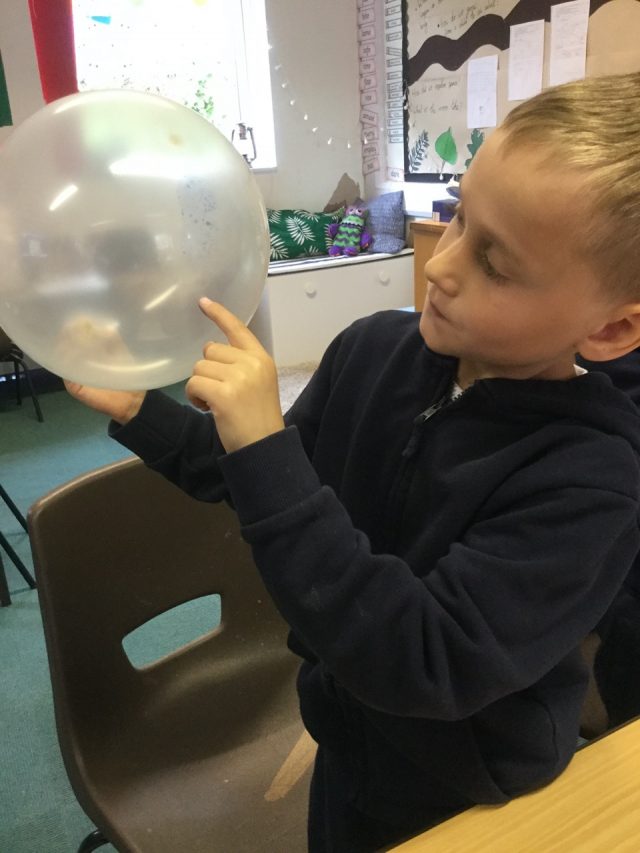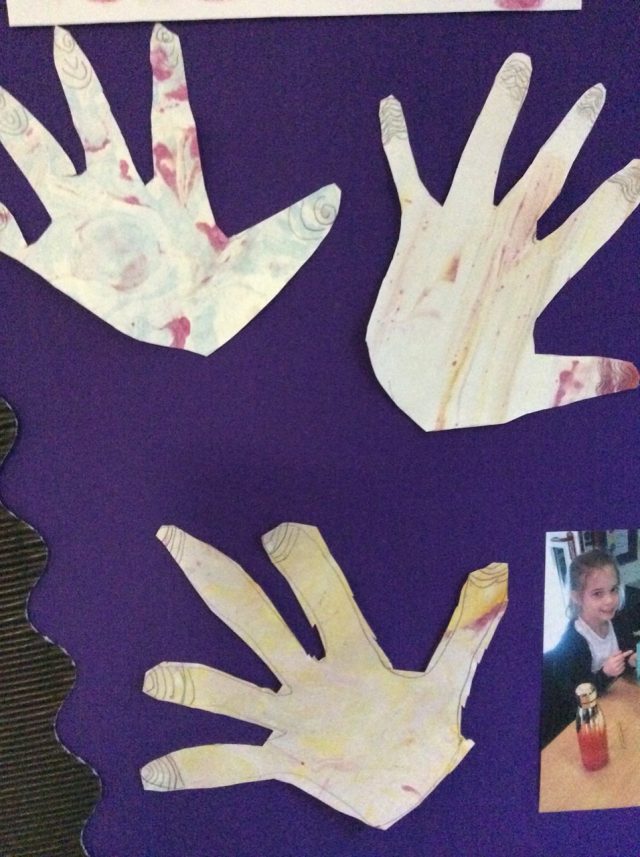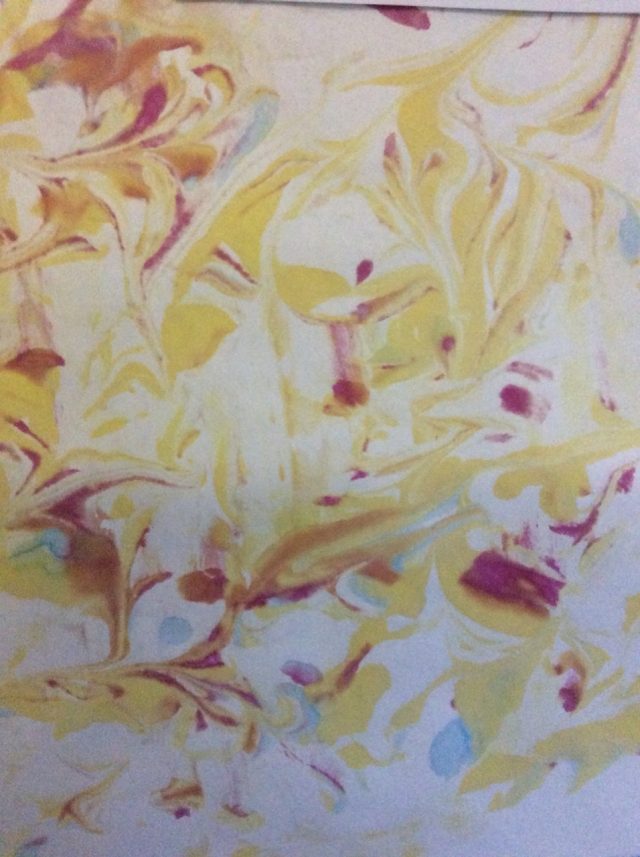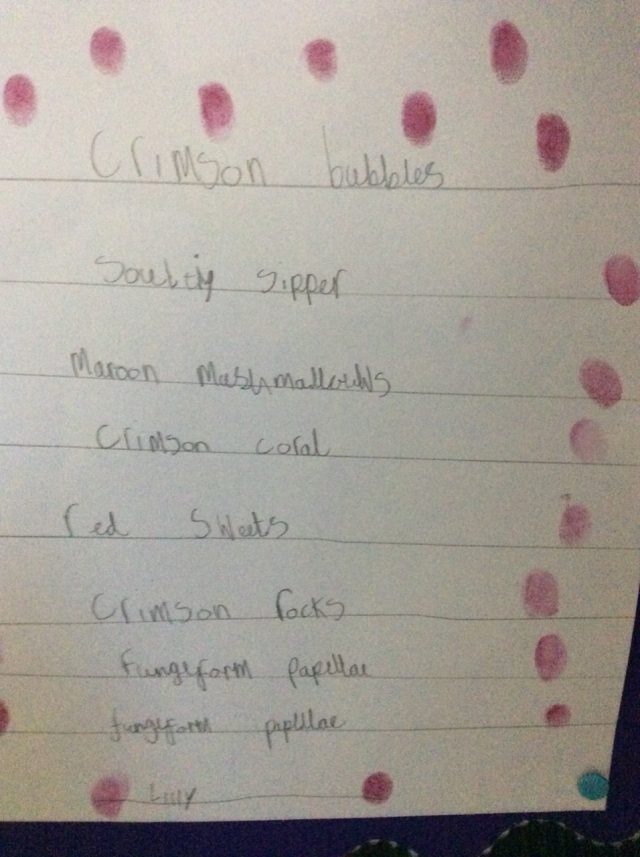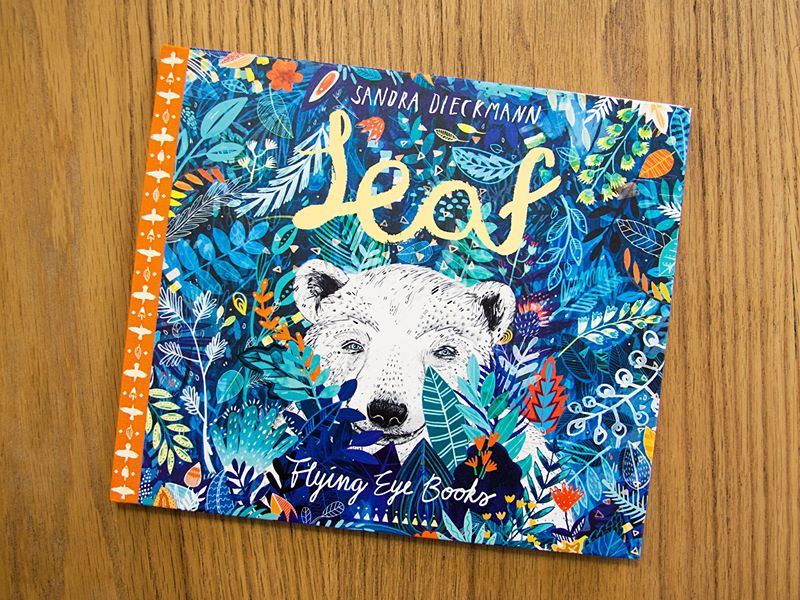Home Learning
Saw Project – Terrific Tastes and Touch!
Last Friday we had a very exciting day completing our first SAW (Science, Art, Writing) project all about our fingerprints and taste buds! We found out if we are tasters, non-tasters or super-tasters by counting the number of taste buds (fungiform papillae) on our tongues (Covid-safely of course!). We also expanded our fingerprints by printing them onto balloons. This allowed us to look much more closely at the whorls, arches and swirls. We then wrote poems using scientific language and finally created swirly handprints using shaving foam and food colouring! It was a busy day, full of fun and learning!
Skylarks – September 2020 News and Information
Hello and Goodbye Hazel Class
Have a great Summer and take care.
Ms Beaumont
Oak Class Tuesday 21st July
Phonics: Use the letters s, h and r to make the blend shr. Make the words shrug, shrink and shrimp. Say the words, sound them out, write them down. Use the words to make a sentence. Write your sentence down and read it to someone at home.
Topic: Power of Reading. Use the book Leaf to think about why the Polar Bear liked the leaves. Can you collect lots of different coloured and shaped leaves. Can you sort them from smallest to largest? Can you sort them from lightest to darkest?
Can you find any different ways to sort them?
Can you find out which trees the leaves came from?
Why not make some leaf print pictures or try some leaf threading! Get arty and have fun!I hope you all have a great day!
Thank you for all your hard work! You have made it to the Holidays!
Well done!
Mrs T x
Monday and Tuesday work
Owls learning for 20th and 21st July
Hazel Class learning for Monday and Tuesday
I can’t believe we’ve got to the end of term. Remember back in March when we were reading about Leaf. Well Mrs Godbold has read the story again for you, so listen carefully as for the next 2 days your activities will be based on that book. It’s also a good chance to hear the rest of the story for those of you who didn’t get to finish it.
Suggested Activities for the next 2 days:
Build a den for Leaf. Pod 3 are off to the woods on Monday to create theirs.
Design and make a machine to get Leaf home.
Imagine how Leaf must feel being left out and ignored – What would he write about if he sent a letter home to his mother?
Make a cake in the shape of a Polar Bear.
Make a design out of leaves.
Use leaves as print blocks – What patterns can you make?
Make some animal models and put on your own play based on the book?
Tune in tomorrow when I’ll be reading you all one on my favourite stories.
Keep Safe
Ms B
Maple Class home learning for Monday 20th and Tuesday 21st July 2020
Listen to Mrs Godbold read the story “Leaf” by Sandra Dieckmann. Choose from the following activities:
- Design a new front cover for the book.
- Write your own version of the story.
- Use a map to locate the countries and continents which contain the natural habitats of the polar bear.
- Design an information sheet about polar bears. Where do they live? What do they eat?
- Have a P4C discussion about “Is there a difference between a home and a house?”
- Create some music to accompany the story. Which instruments would you use?
- Can you move like a polar bear? How would a polar bear travel around the garden?
- Visit the Yorkshire Wildlife Park video to see the polar bears www.youtube.com/watch?v=pm1l8bM6WTM
- Make your own polar bear mask and act out the story.
- Collect some amazing facts about polar bears. How old is the oldest polar bear? How much do polar bears weigh? How tall are polar bears?
Oak Class Monday 20th July
I hope you have all enjoyed the weekend! With only 2 days left of term, I would like to say a big thank you for all your hard work, and I hope you have a really lovely summer break!
Phonics: Today we are going to use the letters t, h and r to make the sound thr. Can you make the words three, throne and thread. Tricky words today, but give it a go! Say the words, sound them out, write them down. Use the words to help make a sentence. Write the sentence and read it to someone in your home.
Topic: Listen to the story read by Mrs Godbold for our Power of Reading book.What did you think about the story? Did you like the story? Did you like the illustrations? Why not find the picture you liked the best and copy that picture. You could use collage, paint or pencils.
Why was the polar bear sad? Why did he get lost? Why were the other animals scared of him? Where do Polar bears live? Can you find out about polar bears?
Why was he called Leaf?
I hope you have fun learning from this book. More ideas for tomorrow!
Have a good day!
Mrs T X
Elm Class learning 20th and 21st July 2020
As a school we have decided to end this year, in the same way it began: The Power of Reading. Listen to the story: Leaf, which Mrs Godbold will read to you via the school facebook page). Then try some of these activities linked to the book. There are more ideas here than you can fit into two days, but I’ve provided a selection across different subjects to for you to choose from!
Enjoy this wonderful story!
Questions to talk about while listening to the story:
– Why were the animals of the wild wood scared of the creature?
– Do you think they were right to be scared?
– Why did the polar bear collect the leaves?
– How can you tell that the polar bear is sad and lonely?
– Pause & study the page where all the animals discuss what they think about the creature. Why do they have different opinions? What do their responses tell you about each animal’s own feelings and personality? Are the animals being fair? If not, why not?
English Activities:
– Can you retell the story from the polar bear’s point of view? Think about how he would be feeling. You could act out the story pretending to be polar bear, write it in a diary form, draw it as a comic strip, write your own version or even make your own book.
– Imagine the crows were not brave enough to talk to Leaf but instead wrote him a letter. What do you think they would say? Can you write Leaf’s reply?
P4C: Should we always be fearful of strangers?
Art: Can you collect leaves and other natural objects from outside and use them to produce a piece of artwork? You could try looking at the work of Andy Goldsworthy as inspiration or look at the work inspired by rainforests and nature of Henri Matisse.
DT: Can you design a flying machine to take Polar Bear home?
Science:
– Research the causes and effects of the ice melting in the Arctic. Can anything be done to help?
– Find out how the brown bear evolved into the polar bear. How is the polar bear adapted to the arctic environment? A useful video clip can be found here.
Geography: Can you use an atlas or world map to locate the Arctic regions that would be the polar bear’s natural habitat. What are the natural features of these areas? What is the climate like? Can you compare these regions to hotter regions? How are they different? What is the meaning of the word desert? Does it always link to a hot place?
Maths:
– Write some directions to help polar bear find his way home, including use of the eight compass points. Can you draw a map with co-ordinates to help him?
Can you have a go at the Polar bear dice puzzle? (See class web page for further details).
– Can you create some top trumps for the different animals that feature in the book- the numbers could be based on their speed or strength for example? You could then have a game with someone else using the cards you have created!
Well done for all of your hard work this year! You have been amazing!
We are nearly at the summer holidays!
I would love to see any work from these two days- you can email me this if you like.
Miss Coates

Rowan Learning 20-21st July
As a school we have decided to end this year, in the same way it began: The Power of Reading. Listen to the story: Leaf, which Mrs Godbold will read to you via the school facebook page). Then try some of these activities linked to the book. There are more ideas here than you will fit into two days, but I’ve provided a selection across different subjects to for you to pick from.
Questions to talk about while listening to the story:
- Why were the animals of the wild wood scared of the creature?
- Do you think they were right to be scared?
- Why did the polar bear collect the leaves?
- How can you tell that the polar bear is sad and lonely?
- Pause & study the page where all the animals discuss what they think about the creature. Why do they have different opinions? What do their responses tell you about each animal’s own feelings and personality? Are the animals being fair? If not, why not?
English Activities:
- Can you retell the story from the polar bear’s point of view? Think about how he would be feeling. You could act out the story pretending to be polar bear, write it in a diary form, draw it as a comic strip, write your own version or even make your own book.
- Imagine the crows were not brave enough to talk to Leaf but instead wrote him a letter. What do you think they would say? Can you write Leaf’s reply?
P4C: Should we always be fearful of strangers?
Art: Can you collect leaves and other natural objects from outside and use them to produce a piece of artwork? You could try looking at the work of Andy Goldsworthy as inspiration.
DT: Can you design a flying machine to take Polar Bear home?
Science:
– Research the causes and effects of the ice melting in the Arctic. Can anything be done to help?
– Find out how the brown bear evolved into the polar bear. How is the polar bear adapted to the artic environment? A useful video clip can be found here.
Geography: Can you use an atlas or world map to locate the Artic regions that would be the polar bear’s natural habitat. What are the natural features of these areas? What is the climate?
Maths:
– Write some directions to help polar bear find his way home, including use of the eight compass points. Can you draw a map with co-ordinates to help him?
– Try this Polar Bears puzzle (tips & a solution can be found in the download section below).

Downloads



